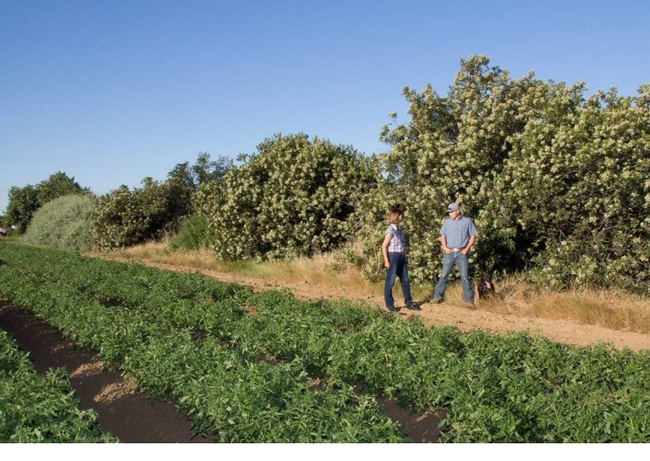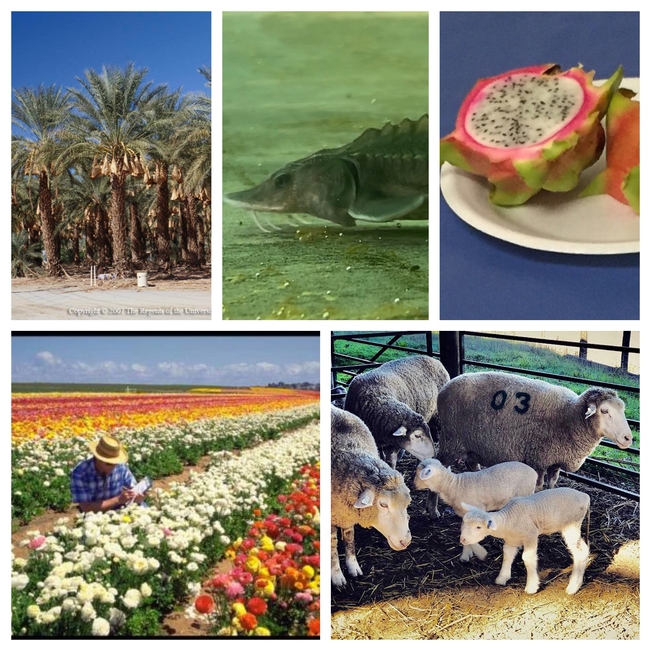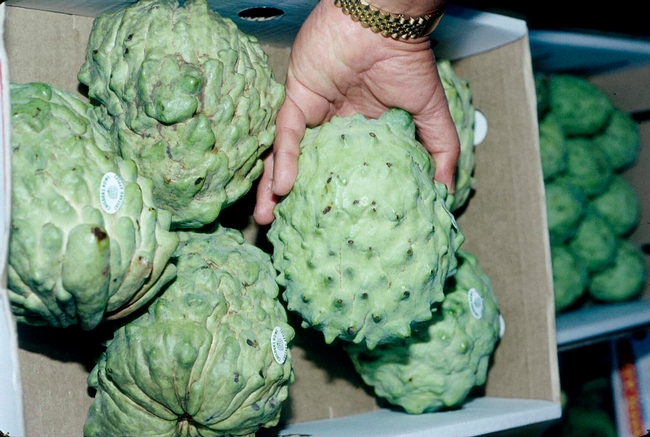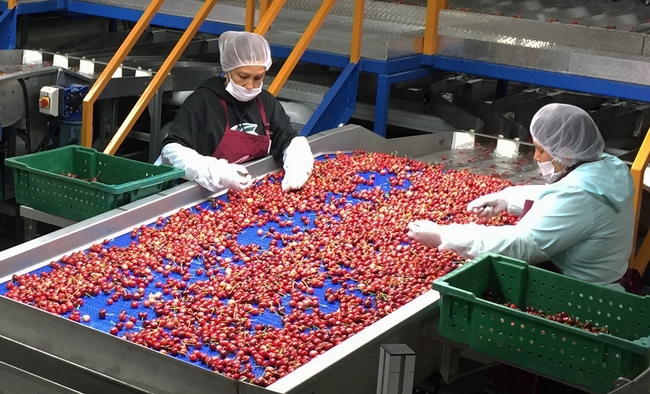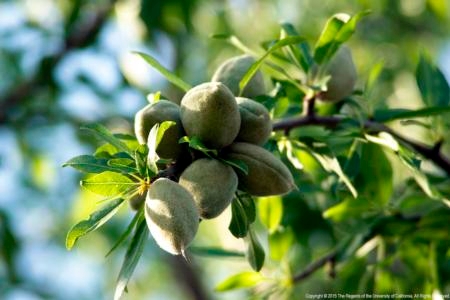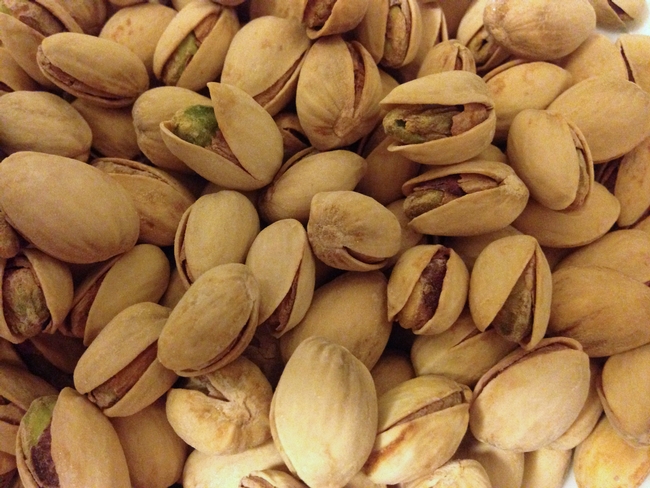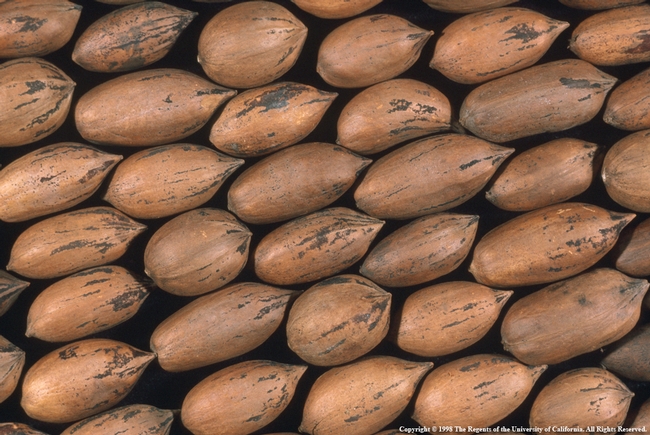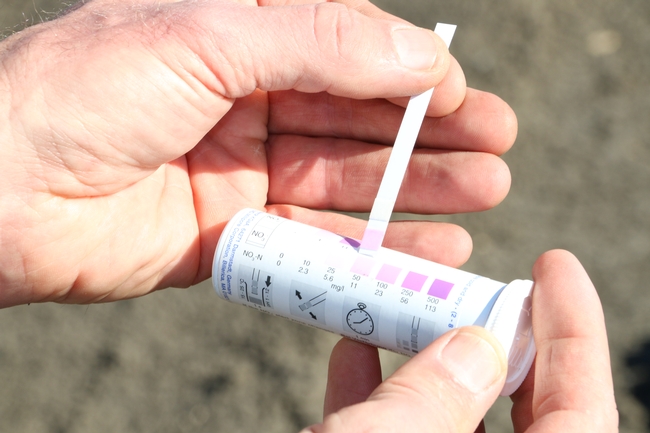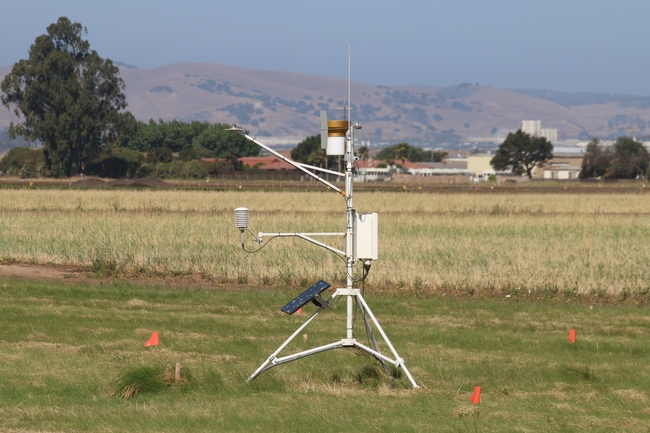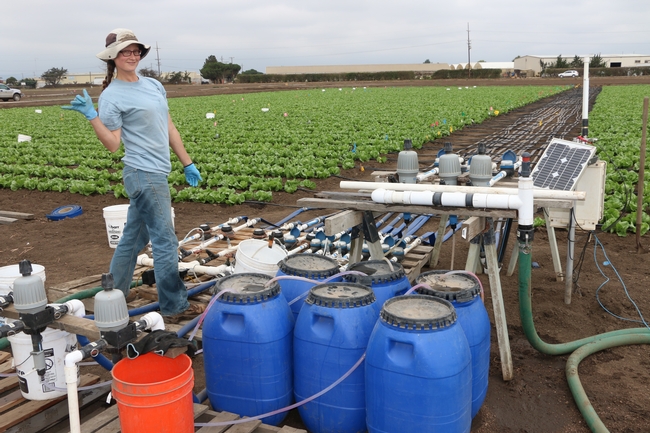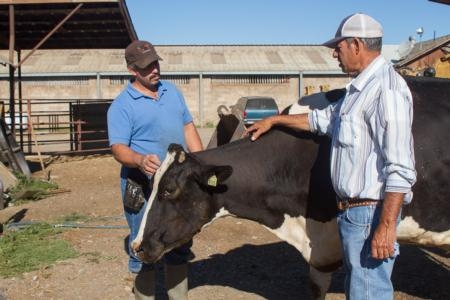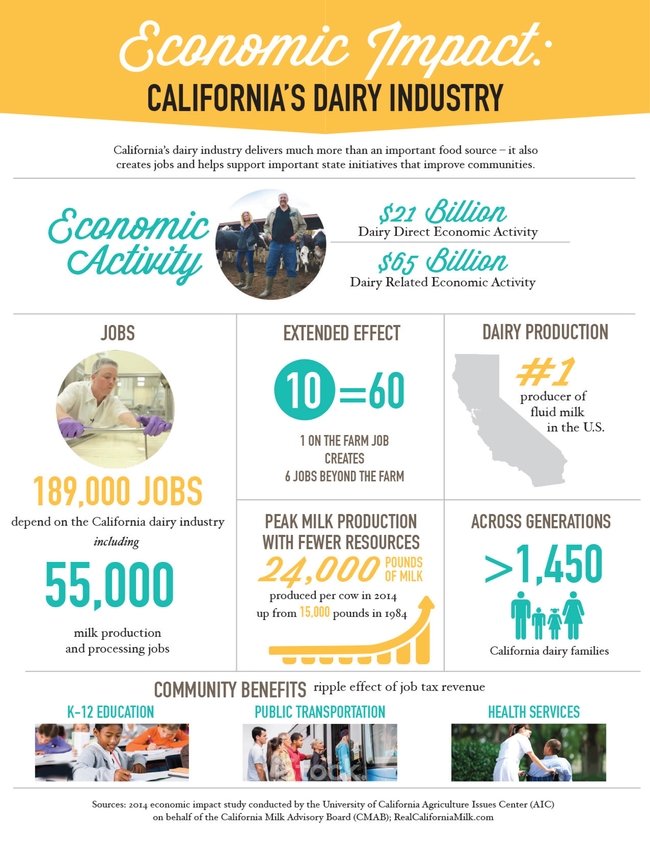Posts Tagged: The Daniel
Daniel and Sarah Hrdy create endowment to fund UC Cooperative Extension research
The Yolo County walnut growers will provide as much as $100,000 per year for “practical” research
The University of California Division of Agriculture and Natural Resources (UC ANR) announced that Dan and Sarah Hrdy, owners of Citrona Farms LLC, a walnut farm in Winters, have established The Daniel & Sarah Hrdy Fund for UC Cooperative Extension Research.
The fund will provide as much as $100,000 in seed funding for early-stage research projects each year for UC Cooperative Extension advisors and specialists, as well as their academic collaborators. Dan, a former clinical professor of medicine (infectious diseases) at UC Davis Medical Center, and Sarah, a professor emerita of anthropology at UC Davis, created the fund to express their appreciation for UC Cooperative Extension's practical yet cutting edge research.
“Over the years, we have hosted a number of researchers from UC ANR, UC Davis and UC Berkeley studying topics related to sustainable agriculture, habitat restoration and wildlife conservation and have benefited both directly and indirectly from the UC Cooperative Extension network,” said Dan Hrdy. More than 20 years of UC research hosted at Citrona Farms is detailed on their website at www.citrona.com.
Research proposals will be selected by the leaders of UC ANR's Strategic Initiatives: Sustainable Food Systems; Endemic and Invasive Pests and Diseases; and Sustainable Natural Ecosystems.
Areas of special interest include:
- Sustainable Agriculture, with special regard to climate change
- Interaction of Natural Ecosystems and Agriculture
- Habitat Restoration and Conservation
- Wildfire and Forest Restoration
"The timing for this donation could not have been better as UC ANR is actively recruiting an extraordinary number of new UCCE advisors and specialists and support for their research is greatly appreciated," Wendy Powers, UC ANR associate vice president, said. “This is a great example of how local relationships build trust and support for UCCE efforts across the state."
The fund will be established with annual gifts as part of a payout from the donor's retirement account, along with a bequest that, when paid, will create a permanent endowment where the payouts will continue to fund this project. The Hrdys hope to make others aware of this method of charitable giving.
"We were able to use required payouts from a retirement account to set up this gift,” said Dan Hrdy. “I hope more people will look into doing this to help support Cooperative Extension.”
Investors who must satisfy a required minimum distribution from their retirement accounts may consider a qualified charitable distribution (QCD), said Greg Gibbs, UC ANR executive director of Development Services.
“A qualified charitable distribution is a direct transfer of funds from your IRA custodian, payable to a qualified charity, like the UC Regents/UC ANR,” Gibbs said. “Once you've reached age 72, the QCD amount counts toward your required minimum distribution for the year, up to an annual maximum of $100,000. It's not included in your gross income and does not count against the limits on deductions for charitable contributions.”
More California farmers eligible for USDA Coronavirus Food Assistance Program funds
UC ANR experts available to comment
California farmers stand to benefit from the addition of more commodities now covered by the USDA Coronavirus Food Assistance Program, say UC Agriculture and Natural Resources experts. Yesterday (Aug. 11) the U.S. Department of Agriculture expanded eligibility and extended the deadline to apply to Sept 11.
Farmers of aquaculture, nursery crops and flowers, sheep and specialty crops such as dates, dragon fruit, nectarines, pomegranates, pumpkins and many other specialty crops grown in California are now eligible for financial assistance to help keep their operations afloat during the business disruption caused by the pandemic.
Below are UC Cooperative Extension advisors and specialists who are available for comment:
Daniel Macon, UC Cooperative Extension livestock and natural resources advisor serving Placer, Nevada, Sutter and Yuba counties, dmacon@ucanr.edu
“Including all sheep will be HUGE for California producers. Most California lambs are born in the fall and marketed in the late spring. The rest of the West has lambs born in the spring and marketed in the fall/winter/early spring. The original CFAP payments provided a maximum payout to lambs that would have been marketed earlier than most California lambs. And provided no payment for what we call running-age ewes (breeding animals).”
Jackson Gross, UC Cooperative Extension aquaculture specialist at UC Davis, jagross@ucdavis.edu
“This is a big distinction for our California freshwater fish producers. While it doesn't cover all of the diversity in California aquaculture, it does cover the majority of our industry as far as freshwater fish producers. A specialty crop distinction is important for our fish farmers, making them eligible for specialty crop funding and numerous other federal and state programs that were previously inaccessible.”
Cheryl Wilen, director of UC Cooperative Extension in San Diego County, cawilen@ucanr.edu
“It is my impression that ornamental nurseries will really have a good opportunity to recover money for unsold crops.”
Ruth Dahlquist-Willard, UC Cooperative Extension small farms and specialty crops farm advisor for Fresno and Tulare counties, rdwillard@ucanr.edu
"The addition of crops such as bok choy, daikon, winter melon, and turmeric expands the program to include more of the specialty produce grown on small-scale Southeast Asian farms in the Central Valley. However, highly diversified farms may find it difficult to apply for small acreages of multiple crops, and with USDA offices operating remotely, additional technical assistance is needed to support farmers with the application process."
Ramiro Lobo, UC Cooperative Extension small farms and agricultural economics advisor in San Diego County, relobo@ucanr.edu
“The specific mention of minor crops can be significant for small-scale growers in the state, and Southern California in particular for growers of crops like dragon fruit, and other minor subtropicals because it legitimizes them as commercial crops.”
Aparna Gazula, UC Cooperative Extension small farms and specialty crops farm advisor for Santa Clara, San Benito, and Santa Cruz counties, agazula@ucanr.edu
“It's great that the USDA Coronavirus Food Assistance Program has been expanded to include more minor crops. I hope the USDA offices have bilingual staff who can work with socially disadvantaged farmers with language barriers that often grow these crops.”
Aliasghar Montazar, UC Cooperative Extension irrigation and water management advisor in Imperial and Riverside counties, amontazar@ucanr.edu
“Maintaining date palms over the season is very labor oriented. During February to May, a lot of activities need to be conducted at a certain time. As you know, we had high pressure from the pandemic in the Coachella Valley during these months. It made labor less available, which created some challenges for growers.”
Mae Culumber, UC Cooperative Extension nut crop advisor in Fresno County, cmculumber@ucanr.edu
“Almonds, pistachios and walnuts commodities all suffered a price decline between mid-January and mid-April as a result of the COVID-19 pandemic. Thirty to 50 percent of the previous season's crop is normally marketed during this time of the year. The CFAP program will provide financial relief for losses due to price decline and spoiled shipments that lost a marketing channel due to the pandemic. Commodity boards are working with the Farm Service Agency to assist producers in applying for the program.”
New tariffs could cost U.S. nut and fruit industries over $3 billion
The ongoing international trade turmoil between the U.S. and other countries has prompted import tariffs on many U.S. agricultural commodities in important export markets, which could hurt U.S. farmers.
A new report released by the University of California Agriculture and Natural Resources' Agricultural Issues Center estimates the higher tariffs could cost major U.S. fruit and nut industries $2.64 billion per year in exports to countries imposing the higher tariffs, and as much as $3.34 billion by reducing prices in alternative markets.
“One way to mitigate the impact of the tariff impacts would be to offer assistance to shift the products to completely new markets where these displaced commodities could be delivered without causing price declines,” said co-author Daniel A. Sumner, director of the UC ANR Agricultural Issues Center and UC Davis professor in the Department of Agricultural and Resource Economics.
When nuts and fruits are diverted back into the remaining markets for their crops, Sumner and co-author Tristan M. Hanon, a UC Davis graduate student researcher, expect farmers to lose revenue from lower prices.
The agricultural economists foresee major losses for many commodities caused by diverting the produce from high tariff countries to sell in the remaining markets.
Almonds alone could lose about $1.58 billion and pistachios could lose about $384 million, according to Sumner and Hanon.
The authors looked at the impact of tariffs on almonds, pecans, pistachios, walnuts, apples, oranges, raisins, sour cherries, sweet cherries and table grapes. All 10 nuts and fruits are perennial crops, growing on trees or vines, so growers cannot easily change their production quantities or plant a different crop.
The U.S. exports 13 percent of its almonds, 14 percent of its pistachios and 22 percent of its pecans to countries imposing the new tariffs. China and Hong Kong are major export markets for U.S. fruits and nuts. In 2016 and 2017, China and Hong Kong spent over $500 million to buy 40 percent of all U.S. almond exports, and nearly $600 million for most of the exported pistachios. Some of the exports to Hong Kong are transshipped to other markets, but most of it stays in the China market.
The new tariffs apply to all ten crops that are exported to China. “We consider most of the exports to Hong Kong with China because we understand that most of the U.S. fruit and nut exports to Hong Kong are destined for China,” Sumner said.
To avoid paying tariffs, there are clues that Hong Kong's open market is the entry point for nuts ultimately shipped to China, in what Sumner calls “leakage.”
“The 7 million people in Hong Kong would have to eat 20 times the pistachios consumed by people in other countries if they aren't sending them on to China, the Philippines and other Asian countries,” Sumner said. “China turns its back on leakage, but those commodities may be vulnerable if China decides to crack down.”
After the Trump administration imposed tariffs on an additional $16 billion worth of Chinese goods, China announced duties on $16 billion of American goods. Another round of new tariffs has now been scheduled.
In India, Mexico and Turkey, new higher tariffs apply to selected fruit and nut products. India, which buys roughly half of all exported U.S. almonds, applies new tariffs to almonds, walnuts and apples. Turkey's new tariffs apply to almonds, pecans, pistachios and walnuts. Mexico's tariffs target apples, for which the country paid about $250 million last year.
U.S. Secretary of Agriculture Sonny Perdue announced up to $12 billion in federal aid to farmers to soften the impact of tariffs.
“The U.S. government could purchase the commodities that would have been exported,” Sumner said. “Of course, the produce must be diverted from remaining markets to new market channels to avoid driving down prices.”
The full report “Economic Impacts of Increased Tariffs that have Reduced Import Access for U.S. Fruit and Tree Nuts Exports to Important Markets,” along with details on data, sources and methods, can be downloaded for free at the UC Agricultural Issues Center website at http://aic.ucdavis.edu.
[This article was updated at 10 pm, Aug. 14, to update the dollar estimates in this sentence: "Almonds alone could lose about $1.58 billion and pistachios could lose about $384 million, according to Sumner and Hanon."]
California nitrogen assessment presents opportunities for improvement
Plants need nitrogen to grow, but excess nitrogen – from livestock facilities, septic systems, car exhaust and other sources – that escapes into groundwater and the air can impact the environment, human health and the climate.
A new report from the Agricultural Sustainability Institute at UC Davis offers a big picture look at the scale and impacts of nitrogen in California. According to the California Nitrogen Assessment, excess nitrogen in the state comes primarily from agriculture and fossil fuel combustion.
The report, published by UC Press, offers a scientific foundation to develop practices and policies that allow nitrogen's benefits while reducing the risk.
For years, UC Agriculture and Natural Resources scientists have been working with farmers throughout the state to refine fertilizer management, irrigation efficiency and other farming practices to manage nitrogen, and the work continues.
The following are some examples of UC ANR research and extension projects underway.
App helps farmers better manage nitrogen fertilizer and water
Growers can use CropManage, developed by Michael Cahn, UC Cooperative Extension advisor in Monterey County, and UC ANR Communication Services and IT staff, to track and manage water and nitrogen fertilizer applications for their crop fields. The online application can be used on mobile devices or computers to help farmers use two tools to conserve water and make better use of nitrogen fertilizer while maintaining crop productivity and quality. Growers use the soil nitrate quick test in the field to measure the nitrogen level of their soil and the app to determine the optimal level of nitrogen fertilizer to apply based on UC ANR research on crop nitrogen use. CropManage also recommends water needs of a crop from weather station data and crop development models.
Matching nitrogen applied to crop need improves efficiency
Richard Smith, UC Cooperative Extension advisor in Monterey County, is leading several research projects evaluating the nitrogen requirements of vegetables including including cole crops, spinach, baby lettuce, a salad mix and cilantro. Smith is evaluating crop rotations with broccoli to scavenge nitrogen from the soil profile. He is also evaluating slow-release fertilizers to minimize nitrate leaching losses in shallow-rooted crops such as baby lettuce and spinach in the Salinas Valley.
Wood chips remove nitrogen in tile drain water
Using wood chips and supplemental carbon sources, Tim Hartz, UC Cooperative Extension specialist in the UC Davis Department of Plant Sciences, worked with Cahn and Smith to refine a process to remove nitrate from tile drain water, which typically is very high in nitrate. The carbon in the wood chips supports the activity of anaerobic bacteria that chemically reduce the nitrate to N2, a benign gas.
Irrigation water fertilizes vegetables
Water quality regulations in many regions of California now require farmers to report the amount of nitrogen fertilizer that they apply to their fields and the nitrate concentration of their irrigation water. Smith, Hartz and Cahn have just finished three seasons of field trials that demonstrated that the nitrate in groundwater supplied a substantial portion of the fertilizer requirements for lettuce and broccoli. By accounting for the nitrate in irrigation water and using the soil nitrate quick test to monitor soil nitrogen levels, growers may be able to significantly reduce the amount of fertilizer nitrogen they apply to vegetable crops.
Micro-irrigation offers almond growers a tool to control leaching
The majority of almond growers apply fertilizer through micro-irrigation systems and an increasing number of growers are irrigating with water that is saline. Patrick Brown, professor in the UC Davis Department of Plant Sciences, is studying how to use micro-irrigation to reduce nitrate leaching and manage soil salinity by varying the frequency of irrigation and the length of time water is applied during irrigation.
Managing irrigation to reduce nitrate leaching
To identify the best irrigation management practices to control soil salinity and to minimize nitrate leaching to groundwater, Laosheng Wu, professor and UC Cooperative Extension specialist in the UC Riverside Department of Environmental Sciences, is using computer simulation to consider soil, water, crop nitrogen demand and fertilization with irrigation methods. In collaboration with UC Cooperative Extension advisors, Wu is conducting field experiments on alfalfa in Imperial County, almonds in the Central Valley and avocados at South Coast Research & Extension Center in Orange County to validate the simulations.
Online tool being developed to estimate soil nitrogen mineralization rates
To develop a tool for growers and crop advisers to estimate soil nitrogen, Daniel Geisseler, UC Cooperative Extension specialist in the Department of Land, Air, and Water Resources at UC Davis, is gathering data throughout California to estimate field-specific nitrogen mineralization rates. This project, funded by UC ANR's California Institute for Water Resources, will use nitrogen mineralization data to develop an online tool to help growers adjust their applications of fertilizer. The tool has the potential to increase nitrogen use efficiency in crop production, resulting in lower risks of nitrate leaching to groundwater.
Nitrogen management training for Certified Crop Advisers
Between 2014 and 2016, approximately 900 Certified Crop Advisers participated in a nitrogen management training program coordinated by UC ANR's California Institute for Water Resources with support from CDFA's Fertilizer Research and Education Program. The technical and applied training improves CCAs' understanding of sound nitrogen management practices to make informed recommendations to growers.
The California Nitrogen Assessment book
The book, “The California Nitrogen Assessment: Challenges and Solutions for People, Agriculture, and the Environment,” is available for purchase at ucpress.edu. The 20-page executive summary can be downloaded for free at asi.ucdavis.edu.
This story is also available in Spanish: "La evaluación del nitrógeno en California ofrece oportunidades para mejorar http://ucanr.edu/sites/Spanish/Noticias/boletines/?uid=6884&ds=199
California dairy industry contributes $21 billion to state’s economy
New study conducted by UC ANR Agricultural Issues Center shows significant impact of state's leading agricultural commodity.
Cementing its place as California's most important agricultural commodity by farm revenue, California farms sold about $9.4 billion worth of milk while the dairy industry contributed approximately $21 billion in value added to the gross state product in 2014, according to a California Milk Advisory Board (CMAB) study conducted by the Agricultural Issues Center, a statewide program of UC Agriculture and Natural Resources. Including sales of inputs to dairy farms and milk processors along with raw milk and wholesale milk product sales, the dairy industry contributed $65 billion in total sales to the California economy in 2014. The growing demand for dairy products like cheese and yogurt as well as strong dairy exports accounted for 189,000 jobs that are dependent on the state's milk production and processing.
“The dairy industry's contributions are vital to California's economy, from creating jobs to stimulating local and regional economies to providing nutritious and enjoyable products to consumers everywhere,” said John Talbot, CEO of the California Milk Advisory Board. “A large number of California residents depend on the dairy industry for employment and these jobs would not exist without it.”
The $21 billion to California's gross state product included $7.4 billion as income to industry workers and owners and $13.4 billion through related, outside industries such as feed, veterinary and accounting services used for dairy production and electricity, packaging, equipment and trucking services used by processors. The tax revenue generated from these jobs supported important statewide initiatives to improve education, healthcare, roads, community services and the environment.
Overall, 189,000 jobs in California are associated with the dairy industry. Of this amount, approximately 30,000 jobs are on the farm and 20,000 jobs represent dairy processing. For every dairy farm job, there are several more jobs that are tied to the business and create a linked chain of economic impacts.
Additionally, the induced effect of the dairy industry also creates jobs in the community to support the area's dairy workers and their families, such as school teachers and local bus drivers.
California Holds Rank as Nation's Dairy Leader
California leads the nation in dairy production and dairy continues as the top commodity in the country's top agricultural state. It has been the nation's largest milk producer since 1993 and is also the country's leading producer of butter, ice cream, nonfat dry milk and whey protein concentrate. California is also the second largest producer of cheese and yogurt.
Farm milk sales generated $9.4 billion gross revenue in 2014. Wholesale dairy product (cheese, fluid milk, ice cream, butter and other dairy) sales hit $25 billion in 2014.
Dairy Farmers Improve Business Performance
As an essential part of California's farming heritage, dairy farmers understand the importance of protecting the land, water and air for their families, their communities and future generations. In 2014, California dairy farmers produced more milk with fewer resources. Talbot credits “improved dairy practices and management adopted by farmers” for the increased business efficiencies. The pounds of milk produced per cow increased to 24,000 pounds in 2014 from 15,000 in 1984. Farmers are applying 23 percent less water to their fields than they did in the early 1980s and have seen their average crop yields increase by more than 40 percent despite using less water.
Beyond the economic impacts calculated in the report, California dairy farmers and employees are active participants in their communities and contribute to social, environmental and other broad public goals.
Study Leaders and Methodology
The study was conducted by a team of researchers at the UC ANR Agricultural Issues Center (AIC). Daniel A. Sumner, the director of AIC who holds the Frank H. Buck, Jr. Chair Professorship in the Department of Agricultural and Resource Economics at UC Davis, led the study. Josué Medellín-Azuara, a project scientist at the UC Davis Center for Watershed Sciences, and Eric Coughlin, a junior research specialist at AIC, were part of the research team. They measured myriad impacts using dairy-specific data for 2012 and projections for 2014 and a database and model of economic linkages (IMPLAN).
About the California Milk Advisory Board
The California Milk Advisory Board (CMAB), an instrumentality of the California Department of Food and Agriculture, is funded by the state's more than 1,450 dairy families. With headquarters in South San Francisco and Modesto, the CMAB is one of the largest U.S. commodity boards. It executes advertising, public relations, research and promotions on behalf of California dairy products, including Real California Milk and Real California Cheese. For more, visit RealCaliforniaMilk.com.

